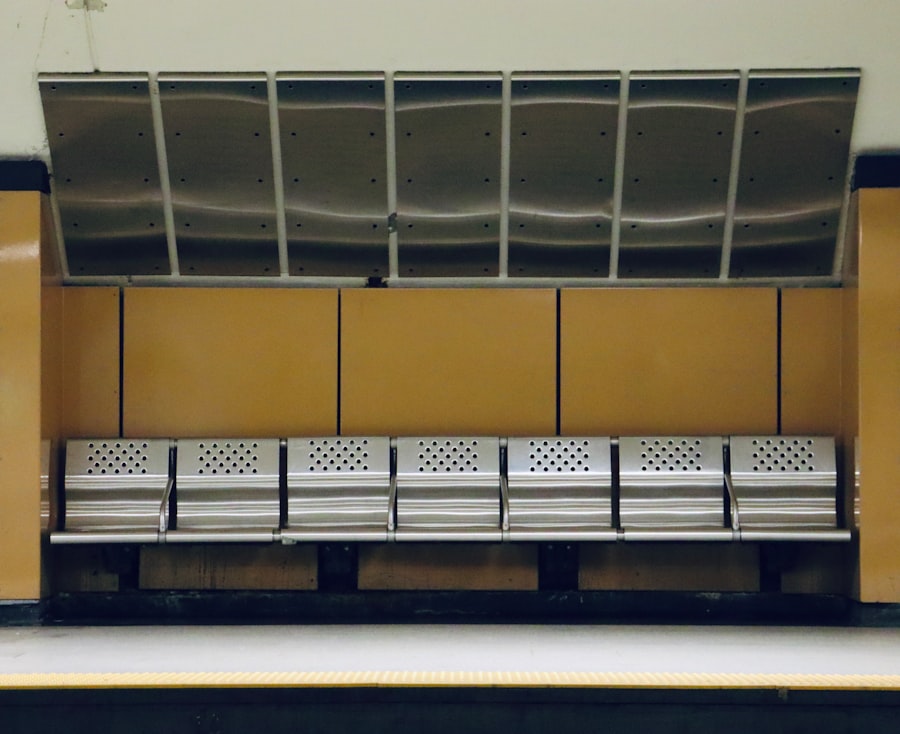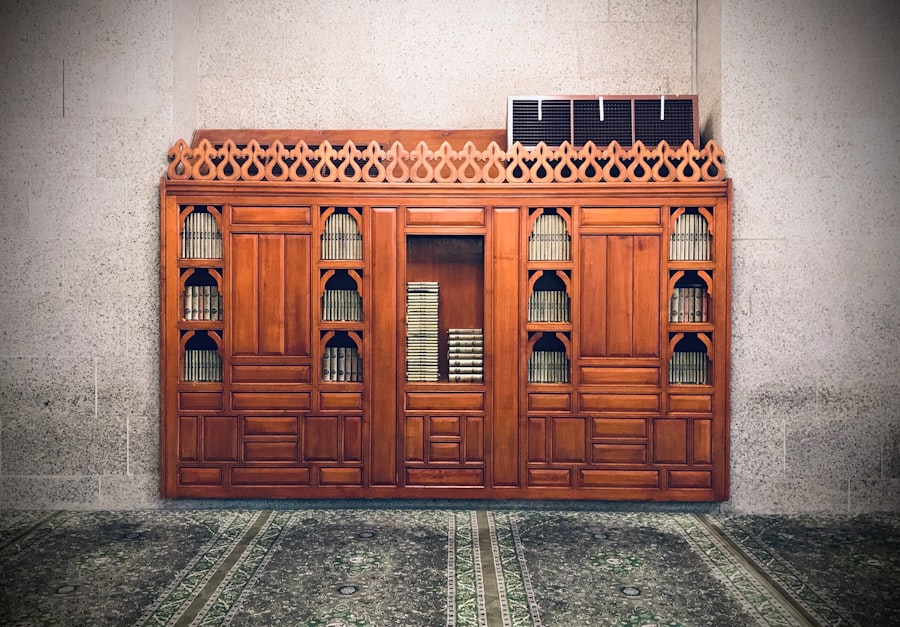Amish cabinet craftsmanship is a time-honored tradition that reflects a deep commitment to quality, functionality, and aesthetics. Rooted in the values of simplicity and sustainability, Amish artisans employ techniques that have been passed down through generations. The craftsmanship is characterized by meticulous attention to detail, with each piece often handcrafted from solid hardwoods such as oak, cherry, and maple.
Unlike mass-produced furniture, which often relies on synthetic materials and assembly line techniques, Amish cabinets are built to last, showcasing the natural beauty of the wood grain and the skill of the craftsman. The process of creating Amish cabinets begins with selecting the finest materials. Artisans often source their wood locally, ensuring that it is not only sustainable but also suited to the regional climate.
This local sourcing contributes to the unique character of each piece, as variations in wood grain and color can reflect the specific environment from which the materials were drawn. The construction methods employed are equally impressive; traditional joinery techniques such as dovetail joints and mortise-and-tenon joints are commonly used, providing strength and durability without the need for metal fasteners. This dedication to craftsmanship results in cabinets that are not only functional but also serve as heirloom pieces that can be passed down through generations.
Key Takeaways
- Amish cabinets are renowned for their handcrafted quality and traditional craftsmanship.
- Locate Amish cabinet makers nearby by researching local directories and community recommendations.
- Visiting showrooms allows you to see cabinet styles and craftsmanship firsthand before purchasing.
- Compare quality and pricing to ensure you get durable cabinets that fit your budget.
- Customization options let you tailor cabinets to your specific design and functional needs.
Finding Amish Cabinet Makers in Your Area
Locating Amish cabinet makers in your vicinity can be an enriching experience, as it allows you to connect with artisans who embody a rich cultural heritage. One effective way to find these craftsmen is through local directories or online resources that specialize in Amish businesses. Websites dedicated to promoting Amish craftsmanship often provide listings of cabinet makers along with customer reviews and contact information.
Additionally, visiting local farmers’ markets or craft fairs can lead you to Amish artisans who showcase their work and may even take custom orders. Another avenue for discovering Amish cabinet makers is through word-of-mouth recommendations. Engaging with local communities or online forums focused on woodworking or home improvement can yield valuable insights.
Many Amish craftsmen operate small workshops or family-run businesses, so personal referrals can lead you to hidden gems that may not have a significant online presence. Once you identify potential cabinet makers, consider reaching out to them directly to inquire about their services, craftsmanship style, and availability for consultations.
Visiting Amish Cabinet Showrooms

Visiting an Amish cabinet showroom offers a unique opportunity to experience the craftsmanship firsthand. These showrooms are often designed to reflect the simplicity and beauty of Amish culture, providing a serene environment where potential buyers can appreciate the quality of the cabinets on display. As you walk through the showroom, you will likely notice the variety of styles available, from traditional designs featuring intricate carvings to more contemporary looks that emphasize clean lines and functionality.
During your visit, take the time to engage with the staff or artisans present. They can provide valuable insights into the construction process, the types of wood used, and the various finishes available. Many showrooms also allow customers to see samples of different wood species and finishes side by side, making it easier to envision how a particular cabinet will fit into your home.
Additionally, some showrooms may offer customization options, allowing you to tailor dimensions, hardware, and finishes to suit your specific needs. This personal interaction not only enhances your understanding of the craftsmanship but also fosters a connection with the artisans behind the work.
Comparing Amish Cabinet Quality and Pricing
| Feature | Amish Cabinets | Standard Cabinets |
|---|---|---|
| Material Quality | Solid hardwood (oak, cherry, maple) | Engineered wood or MDF |
| Craftsmanship | Handcrafted with traditional joinery | Machine-made, mass-produced |
| Customization | Highly customizable designs and finishes | Limited customization options |
| Durability | Lasts 50+ years with proper care | Typically lasts 10-15 years |
| Price Range (per linear foot) | 300 – 600 | 100 – 300 |
| Lead Time | 6 – 12 weeks | 2 – 4 weeks |
| Warranty | Often lifetime or extended warranty | 1 – 5 years |
When considering Amish cabinets for your home, it is essential to compare both quality and pricing across different makers. The quality of Amish cabinets is generally high due to the use of solid hardwoods and traditional construction methods. However, variations can exist based on individual artisans’ skills and techniques.
It is advisable to examine the joinery methods used in each cabinet; for instance, dovetail joints are often a sign of superior craftsmanship compared to simpler methods like butt joints. Pricing for Amish cabinets can vary significantly based on several factors, including the type of wood selected, the complexity of the design, and any customizations requested. While it is true that Amish cabinets may come with a higher price tag than mass-produced alternatives, this cost reflects the quality and longevity of the product.
When comparing prices, consider not only the initial investment but also the long-term value; a well-crafted Amish cabinet can last for decades or even centuries with proper care. It may be beneficial to request quotes from multiple cabinet makers and ask about any warranties or guarantees they offer, as these can provide additional peace of mind regarding your investment.
Customizing Your Amish Cabinets
One of the most appealing aspects of purchasing Amish cabinets is the opportunity for customization. Many Amish cabinet makers pride themselves on their ability to create bespoke pieces tailored to individual customer specifications. This customization process begins with a consultation where you can discuss your vision for your cabinets, including dimensions, styles, finishes, and hardware options.
Whether you are looking for a specific color stain that matches your existing decor or a unique layout that maximizes storage space in your kitchen or bathroom, skilled artisans are often willing to accommodate your requests. The customization process may also extend to functional features within the cabinets themselves. For example, you might want to incorporate pull-out shelves for easier access or specialized compartments for utensils and cookware.
Some craftsmen offer innovative solutions such as built-in lighting or soft-close mechanisms that enhance usability while maintaining aesthetic appeal. By collaborating closely with an Amish cabinet maker during this process, you can ensure that your final product not only meets your practical needs but also aligns with your personal style.
Ensuring Authenticity of Amish Cabinets

As interest in Amish craftsmanship has grown, so too has the prevalence of imitations and mass-produced alternatives marketed as “Amish.” To ensure that you are purchasing authentic Amish cabinets, it is crucial to do your research before making a decision. One way to verify authenticity is by seeking out cabinet makers who are part of recognized Amish communities in Pennsylvania, Ohio, Indiana, or other regions known for their Amish populations. These communities often have established reputations for quality craftsmanship and adhere to traditional methods.
Additionally, inquire about the maker’s background and practices during your consultations. Authentic Amish craftsmen typically emphasize their commitment to traditional techniques and sustainable materials. They may also provide information about their workshop’s location and their involvement in local community events or markets.
If possible, visiting their workshop can offer further assurance of authenticity; seeing artisans at work can provide insight into their methods and dedication to quality.
Caring for and Maintaining Amish Cabinets
Once you have invested in beautiful Amish cabinets, proper care and maintenance will ensure they remain in excellent condition for years to come. The first step in caring for your cabinets is regular cleaning; using a soft cloth dampened with mild soap and water is often sufficient for routine maintenance. Avoid harsh chemicals or abrasive cleaners that could damage the finish or wood surface.
For deeper cleaning or polishing, consider using products specifically designed for wood furniture that will nourish the wood without leaving harmful residues. In addition to cleaning, it is essential to protect your cabinets from environmental factors that could cause damage over time. For instance, excessive humidity can lead to warping or cracking in wooden cabinets; using a dehumidifier in particularly damp areas can help mitigate this risk.
Similarly, placing coasters under hot pots or pans can prevent heat damage to surfaces. Regularly checking hinges and hardware for signs of wear will also help maintain functionality; tightening screws or applying lubricant as needed can prolong the life of your cabinets.
Supporting Local Amish Communities through Cabinet Purchases
Purchasing Amish cabinets not only enhances your home but also supports local Amish communities and their traditional ways of life. Many Amish craftsmen operate small family businesses that rely on sales from their handcrafted products for their livelihoods. By choosing to buy directly from these artisans rather than large retailers or mass-produced alternatives, you contribute to the sustainability of their craft and help preserve their cultural heritage.
Moreover, supporting local artisans fosters economic stability within these communities. The income generated from cabinet sales often goes back into local economies, benefiting other businesses such as suppliers of raw materials and local service providers. Engaging with these communities through your purchases creates a ripple effect that strengthens social ties and promotes cultural preservation.
By investing in authentic Amish craftsmanship, you not only acquire a beautiful piece for your home but also play a role in sustaining a rich tradition that values quality over quantity and community over individualism.



